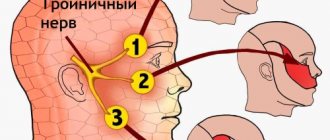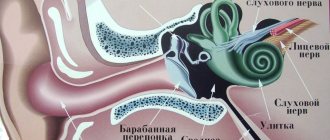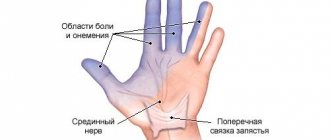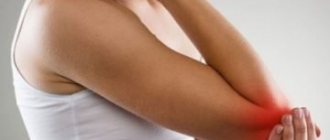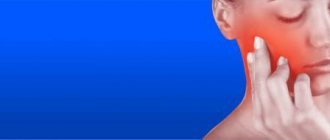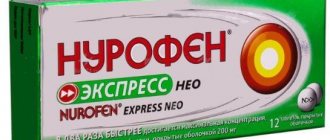Brachial neuritis is an inflammatory process that develops in the shoulder area and affects the nerve tissue. Neuritis should be distinguished from another similar condition - neuralgia. In the first case, the inflammatory process will be in the nerve tissue itself, and in the second it will spread to the tissues that surround the nerve.
However, it is almost impossible for a person without medical education to distinguish one from the other, and the symptoms of neuritis and neuralgia will be almost the same.
Plexitis of the shoulder joint - description of the disease
The brachial plexus is divided into external, posterior and internal bundles, which form a kind of cocoon around the axillary artery.
Such bundles consist of sensory and motor nerves that are responsible for the corresponding functions in the hands.
The lesion can affect both the entire plexus (total plexitis) and some part of it (upper, or otherwise Duchenne-Erb, paralysis and lower, Dejerine-Klumpke), mainly on one arm (occasionally - both).
The disease is quite common in all age categories, reaching its maximum frequency in the period from 20 to 60 years. Among the patients of neurologists with this pathology, men predominate.
Also, plexitis of the shoulder is a common birth injury, developing due to overstretching of the trunks of the nerve plexus during difficult childbirth (when the fetus is squeezed out, its foot or breech presentation).
The shoulder joint is a complex biological mechanism consisting of bundles of muscles and tendons that are located around the joint capsule, covered on the inside with cartilage tissue.
Each of these systems has many nerves that are responsible for the mobility of the shoulder joint, elbow joint, hand and fingers. Nerve endings transmit signals from the brain to the limbs to perform various movements. Receptors on the skin and soft tissues signal the brain about pain caused by contact with hot and sharp objects, bruises and pinches. With proper functioning of the nerve bundle, full mobility of the shoulder, forearm and hands is maintained.
Under the influence of various internal and external factors, inflammation of the nerve endings occurs and they lose functionality. Depending on the stage of the disease or the degree of exposure to these factors, neuralgic symptoms appear to varying degrees.
Plexitis of the shoulder joint according to the location of the lesion has the following classification:
- Total. The disease affects the entire joint with all the ensuing consequences and symptoms.
- Upper. The lesion extends only to the upper nerve bundles. It is the most common disease of the right hand in men.
- Lower. In medical practice, neurologists rarely diagnose this type of brachial neuritis.
Depending on the causes of the disease, its symptoms appear immediately or develop unnoticed over decades.
Folk remedies
Neuralgia of the shoulder joint can be easily treated with folk remedies. They help relieve pain, eliminate inflammation and restore blood circulation. Before using them, you should consult with your doctor, and if you experience any discomfort, stop using them.
Effective folk recipes:
- Wrap a few geranium leaves in a piece of flax and tie it to the affected area for three hours.
- Grate fresh horseradish root, wrap in linen cloth, and apply to your shoulder for about one hour.
- Boil a chicken egg, peel and cut into two parts. While it is hot, apply the inside to your shoulder.
- Grind the black radish and squeeze the liquid out of it or use a juicer. Rub the juice every evening onto the site of neuritis.
- Pour boiling water over 10 g of willow bark and let the drink brew for a while. Drink one spoon four times a day.
- Boil the lilac kidneys until they have a mushy shape, mix with pork fat and let cool slightly. Use the mixture as an ointment.
- Throw a handful of birch buds into 500 ml of vodka and leave for several hours. Rub into shoulder every evening.
- Pour 200 ml of boiling water over 5 tablespoons of sage and leave for 20 minutes. Add the mixture to a warm sea salt bath. Lie in it for at least 15 minutes, immersing your shoulder under water.
- Mix garlic oil with cognac in a 1 to 1 ratio. Rub the liquid onto your temples and forehead twice a day.
- Pour boiling water over dried mint leaves and leave covered overnight. Drink 100 ml morning and evening.
Compresses made from crushed plantain also show high effectiveness. At the same time, it is recommended to brew green tea with lemon balm and drink it without sugar a couple of times a day. It has a mild analgesic effect and normalizes the functioning of the nervous system.
Brachial neuralgia can occur in anyone, causing serious difficulties. In such a situation, it is very important to start treatment in a timely manner in order to suppress all symptoms that arise as soon as possible. It will be possible to return to your normal state in one month, but after that you will need to undergo additional procedures and do gymnastics in order to completely restore the function of your hands.
Neuralgia of the shoulder joint is a pathology associated with acute pain resulting from pinching of the brachial nerve. This disease is not an inflammatory process; pain occurs as a result of swelling or inflammation of a part of the body resulting from defects in innervation. The pinched nerve cannot fully perform its basic functions, as a result, tissue sensitivity suffers and pain occurs.
Neuralgia of the shoulder joint - development and possible complications of the disease
Strange as it may seem, such a process is formed unilaterally. And you need to know for sure that the disease has not completely affected the nerve.
The main factor in the development of the disease is the inflammatory process in the shoulder joint, which, in turn, can be caused by infection, hypothermia or injury.
Often it is the consequences of injury that lead to pinched nerves. Also, during diagnosis, doctors may suspect that the culprit is cervical or thoracic osteochondrosis at an advanced stage, which leads to compression of the spinal nerve roots, as a result of which pain can radiate to the shoulder.
Up to 25% of shoulder plexitis is infectious in nature; immune disorders, injuries and other factors also play a significant role in the development of pathology.
Neuralgia of the shoulder joint is a rather unpleasant pain syndrome that occurs when nerve fibers are compressed. In this case, the nerve itself is not inflamed, but the pain appears due to swelling or inflammation that is located nearby.
However, neuralgia should not be confused with neuritis (plexitis) of the shoulder joint, since in the latter case inflammation occurs in the nerve itself.
However, these two problems are closely related, since neuralgia quite often develops into neuritis if the necessary treatment has not been carried out and the inflammation has spread to the nerve itself.
What are the differences?
Neuralgia, for all its excruciating pain, is generally not dangerous. But with neuritis, when the nerve trunk itself is affected, its functioning may be disrupted.
https://www.youtube.com/watch?v=e391B26KphU
Thus, if large nerve fibers are damaged, the function of all limbs may be disrupted, and muscles will begin to atrophy.
If the terminal (small) nerve fibers are damaged, then some small functions may be disrupted or disappear. This could be a loss of skin sensitivity, for example.
Although this disease causes severe pain, it is not dangerous in the early stages.
Neuralgia of the shoulder joint, like neuralgia in general, appears when the nerve endings are compressed or irritated by intervertebral discs, ligaments and muscles. Moreover, this disease is more typical for older people, when various changes in the vessels occur that are age-related.
Diagnosing neuralgia is quite difficult, since the presence of this syndrome is determined by excluding all other possible causes of pain.
Accordingly, the doctor must determine the disease that caused the pain syndrome, since otherwise treatment of neuralgia will be useless - the pain will constantly return.
As an example, neuralgia quite often develops in various cardiovascular diseases, since the oxygen supply to the nerve fibers becomes insufficient. This problem can also occur with alcohol abuse, diabetes, metabolic disorders (which occurs with diseases of the stomach and duodenum), etc.
With this disease, the symptoms are not varied. First of all, this is, of course, pain, which can have varying intensity and character.
So, the pain can be aching, dull, sharp, burning, or even appear periodically in the form of attacks.
At the same time, during such attacks of pain, sweating increases, muscle twitching appears, and pallor or redness of the skin appears.
Are there spasms in your muscles? Most likely this is the first sign of neuralgia
They can occur for a variety of reasons - due to injuries, hypothermia, awkward movements or heavy physical activity, colds or infections, etc.
As a result, overstrain occurs in the muscles, to which the muscles react with a reflex contraction - a spasm. Next, swelling of the muscle tissue develops, resulting in compression of the nerve endings and pain.
In general, we can say that with neuralgia, paroxysmal pain appears in the shoulder or arm. In some cases it can be constant, in others it can disappear completely between attacks.
In this case, neuralgia is almost always one-sided.
A very unpleasant moment can be the appearance of various neurological symptoms - sensory disturbances, weakened reflexes, etc. This may indicate the development of neurosis of the shoulder joint, i.e. that the inflammation “spread” to the nerve itself.
Neuralgia has the unpleasant tendency to return periodically. In other words, it takes on the form of attacks that can have completely different durations.
Moreover, if no treatment is carried out for a disease such as shoulder neuralgia, then these attacks will gradually progress - the intensity of pain will increase, and the time without pain will decrease.
In this case, the person will have to deal not only with pain, but also with dysfunction of the limb. In particular, hand reflexes may weaken or disappear, limb movements may become constrained, to the point that paralytic phenomena appear.
As we have already said, the development of this disease cannot be left to chance - the consequences in this case can be the most unpleasant. At the same time, if treatment for neuralgia is started in a timely manner, the disease resolves quickly enough, and treatment is almost always successful.
In general, non-steroidal anti-inflammatory drugs are actively used in the treatment of this disease. They help relieve inflammation, which causes pain, resulting in a decrease in pain intensity.
DETAILS: Clinics for spine treatment in Germany
If necessary, painkillers can be used, including novocaine blockade.
Therefore, over time, such drugs can be replaced with ointments that have an anti-inflammatory and analgesic effect. In some cases, ointments that have a warming effect are also used - they improve blood circulation in the affected area, thereby reducing swelling and inflammation.
But since medications cannot be taken for a long enough time, various physiotherapeutic treatment methods are actively used in the treatment of neuralgia.
This could be reflexology (acupuncture), which quite effectively relieves pain, ultrasound, electrophoresis with the use of medications, low-voltage pulsed currents, etc.
Thanks to this treatment, it is possible to restore the full functionality of all body systems, normalize hormonal levels and restore normal oxygen metabolism in tissues.
When it comes to treating neuralgia with folk remedies, it is worth noting that such methods are acceptable if used after consultation with the attending physician.
Over time, neuralgia can take such a form that pain of a paroxysmal nature occurs and periodically repeats.
If the disease is not treated, over time the attacks become more frequent and the intensity of the pain increases.
Advanced cases are characterized by severe intense pain (can last more than an hour).
In the most advanced cases, the pain syndrome turns into neuritis (when the nerve is affected by the inflammatory process). Then the patient experiences dysfunction of the limb: limitation of movements, disappearance of reflexes.
Neuralgia has the unpleasant tendency to return periodically. In other words, it takes on the form of attacks that can have completely different durations. Moreover, if no treatment is carried out for a disease such as shoulder neuralgia, then these attacks will gradually progress - the intensity of pain will increase, and the time without pain will decrease.
In severe advanced cases, the pain becomes very long-lasting and may not go away for quite a long time - more than an hour. The worst case scenario is the transition of this pain syndrome to neuritis, which is already an inflammation of the nerve itself. In this case, the person will have to deal not only with pain, but also with dysfunction of the limb.
Most often, brachial neuralgia is a unilateral process, predominantly on the right. Neuralgia, for all its unpleasant symptoms, is not a dangerous disease. But neuritis can lead to disruption of the nerve, as it is affected.
If the disease affects only certain parts of the nerve plexus, then there will be a partial loss of sensitivity. If the entire nerve bundle is affected, then consequences such as decreased motor strength and even paralysis of the arm are possible. First, the fingers lose the ability to move, then it becomes difficult to bend and straighten the arm, and subsequently complete muscle atrophy is possible.
Which doctor treats the disease?
You can get rid of the disease quickly enough if you seek qualified medical help. If you suspect that you are worried about brachial plexus neuralgia, then you need to undergo treatment from the following specialists:
These doctors are qualified to quickly recognize the disease. At the first appointment, the doctor will carefully examine the patient. The patient must tell the doctor in detail about his feelings and the location of the pain. To clarify the diagnosis, the specialist will also ask the patient several questions:
- How long ago did the first symptoms of neuralgia appear?
- Have there been similar problems in the past?
- What is the nature of the pain?
- What can provoke an increase in the syndrome?
- Are there any chronic diseases?
- Is the patient taking any medications?
- Has he been hypothermic lately?
- Have there been any shoulder injuries?
The answers to these questions will help the doctor quickly find out the exact cause of the disease. Also, information received from the patient will be used by specialists to draw up a treatment program. For each patient it is developed individually, taking into account the characteristics of the body.
Post-traumatic neuritis
Traumatic neuritis (or post-traumatic neuropathy) is the most serious type of shoulder neuralgia. This is a disease that affects the nerve root due to mechanical trauma to the nerve:
- Injured;
- Operations;
- Unsuccessful injections (post-injection neuritis);
- Impacts and prolonged compression;
- Deep burns;
- Fractures and dislocations.
The symptoms of post-traumatic neuritis are very different, but are always associated with the motor activity of the injured limb: weakening of sensitivity (numbness) or, conversely, increased (irritability, pain), impaired movement up to paralysis. The obligatory symptom is persistent pain, which intensifies many times during palpation.
Additionally, paleness or redness of the skin may appear, a feeling of heat appears, and sweating increases. Poor circulation leads to a general deterioration of metabolism. This may be accompanied by hair loss, dry skin, and brittle nails.
Paralysis of the arm due to post-traumatic neuritis of the brachial nerve
Quite often, the main symptoms of post-traumatic neuritis do not develop immediately, but weeks after the injury, and even months. This may make effective diagnosis difficult.
In addition to pain relief and anti-inflammatory measures, treatment will include a set of the following procedures:
- Stimulation of muscles and nerves;
- Acupuncture;
- Taking vitamins “B”, “C” and “E”;
- Additional techniques.
For traumatic neuritis, treatment is selected individually. If nerve atrophy is severe, surgery may be performed to replace the lost nerves with healthy ones (taken from the patient's lower leg and other parts of the body).
One of the main manifestations of the symptoms of the disease is acute pain. Characteristic signs of this disease are a sharp decrease in the activity of the “working” arm, muscle weakness, tendon rupture and pain when bending the limbs.
The most common symptoms of the disease include the following:
- numbness of the limbs;
- vegetative and trophic disorders;
- swelling;
- partial hair loss in the affected area;
- increased sweating;
- dry hands;
- brittle nails;
- possible development of paralysis.
Brachial plexus neuritis is an inflammation of the anatomical structure of the same name, which belongs to the peripheral nervous system.
Many people mistakenly consider this disease to be shoulder neuralgia. In fact, pain is felt in the shoulder area, but it is associated with damage to the brachial nerve, which is why they are referred to as neuralgia.
The following can provoke an inflammatory process in nerve fibers:
- Prolonged hypothermia.
- Infectious diseases.
- Intoxication with chemicals.
- Compression by a tumor, cervical rib, etc.
- Various injuries and damages.
There is a separate form of the disease - idiopathic inflammatory plexopathy, associated with the autoimmune nature of damage to the brachial plexus. May occur after injury, viral infection, or surgery. With adequate treatment, complete recovery occurs after 20–25 months, but repeated exacerbations of the inflammatory process (relapses) are possible.
Clinical picture
Depending on the level of damage to the brachial plexus, the corresponding clinical picture will be observed. If the upper part of the plexus is predominantly affected, the following signs and symptoms will be observed:
- Very intense pain in the arm, aggravated by physical activity.
- There is weakness and atrophy of the muscles in the upper arm (scapulohumeral region).
- It is possible to develop paresis of the arm muscles.
- Sensitivity in the outer area of the shoulder is impaired.
- Asymmetrical placement of shoulders. On the affected side it is lowered.
- It is difficult for the patient to abduct his arm and bend his elbow.
- Upon examination, it is determined that the arm is turned inward and extended at the elbow joint.
- The functionality of the brush is unlimited. The patient can make full movements.
When the lower part of the brachial plexus is affected, motor disturbances and sensory disorders are detected at the level of the forearm and hand. In this case, atrophic paresis of the hand develops (decreased muscle strength and tone). Pain and sensory disturbances are observed mainly on the inner surface of the arm.
Idiopathic inflammatory plexitis is characterized by an acute onset with intense pain in the arm.
Subsequently, the pain syndrome subsides, but in parallel there is an increase in weakness and a decrease in muscle size (atrophy) of the upper arm and shoulder girdle.
In the acute stage of brachial plexus neuralgia, when clinical symptoms are especially pronounced, many physiotherapeutic procedures, therapeutic massage and special physical exercises are contraindicated.
Diagnostics
As a rule, a preliminary diagnosis of brachial neuritis can be made based on clinical examination data. Characteristic clinical symptoms significantly narrow the scope of the diagnostic search.
DETAILS: Quartz lamps for the treatment of joints
Electroneuromyography allows you to determine the level and severity of damage to nerve fibers. All other research methods are used to exclude other types of pathology, such as diabetes mellitus, periarthritis, tumor, etc.
What instrumental types of diagnostics can be used:
- Radiography.
- CT scan.
- Magnetic resonance examination.
- Spinal cord puncture.
In the early stages of the disease, due to similar clinical symptoms, brachial neuritis is often confused with articular pathology (for example, glenohumeral periarthritis). Both of these diseases will be characterized by fairly intense pain and significant limitation of the functionality of the joint.
Treatment
Today, conservative therapy successfully copes with inflammation of the brachial plexus. In most cases, the prognosis is quite favorable. In approximately 90% of patients, there is a complete restoration of strength, tone and trophism of the muscles that were involved in the pathological process. The main methods of treating brachial plexus neuritis:
- Painkillers.
- Physiotherapeutic procedures.
- Massotherapy.
- Special gymnastics.
In the acute period of the disease, the main goal of treatment is relief from pain. They try to give maximum rest to the sore hand. You can even use a splint to immobilize a limb (immobilize it).
Various medications can help effectively cope with pain. Most often they resort to non-steroidal anti-inflammatory drugs, non-narcotic and narcotic analgesics.
The use of all drugs, especially from the last pharmacological group, is allowed only after obtaining approval from the attending physician.
They are used in short therapeutic courses over 2–3 days. It should be borne in mind that corticosteroids cannot prevent the onset of paralysis or promote rapid relief from it.
Physiotherapy
In the treatment of brachial neuritis, special importance is attached to physiotherapeutic methods for moderate clinical symptoms, but not in the acute stage of the disease.
The objectives of physiotherapy include getting rid of intense pain, relieving inflammation of the brachial nerve, improving peripheral microcirculation and normalizing neuromuscular transmission.
What physical procedures are usually prescribed:
- Short-pulse electroanalgesia.
- Ultrahigh frequency therapy.
- Electrophoresis with anti-inflammatory drugs.
- Local cryotherapy.
- Healing mud.
- Infrared laser therapy.
- High frequency magnetic therapy.
- Darsonvalization.
- Acupuncture.
- Neuroelectric stimulation.
- Sage and mustard baths.
For example, mud compresses help cope with inflammation and speed up recovery processes. Sulfide, sapropel and peat muds have a positive effect.
Vasodilating effects have been noted with the use of magnetic therapy, infrared irradiation and laser therapy. Electroanalgesia, local cryotherapy and electrophoresis with anesthetic drugs help relieve pain.
Normalization of trophism and microcirculation is ensured by darsonvalization and vibration therapy.
The combination of necessary physiotherapeutic procedures for the treatment of inflammation of the brachial nerve is determined by the attending physician.
Massage
Many years of experience show the high effectiveness of therapeutic massage in the treatment of neuralgia or neuritis of the brachial nerve.
The objectives of the massage include stimulation of the neuromuscular system, restoration of skin sensitivity and the functional state of the shoulder area.
It is worth immediately noting that in acute inflammatory processes this physiotherapeutic method is strictly contraindicated. It is also not used in cases of severe pain.
Massaging movements should be extremely gentle, not causing discomfort in the patient. In addition, it is necessary to avoid vigorous pressure on painful points.
For best effect, use special creams or oil.
On average, the procedure lasts up to 20 minutes. The therapeutic course includes 15–18 sessions.
During the recovery period, they must resort to physical therapy. As a rule, exercise therapy helps improve peripheral blood circulation, strengthen the musculo-ligamentous system and prevent the occurrence of contractures.
The main techniques are aimed at normalizing mobility in the shoulder joint, increasing muscle strength and tone, as well as eliminating residual movement disorders.
Approximate set of exercises for brachial plexus neuritis:
- You can be in a standing or sitting position. Nothing complicated, just raise your shoulders up and down. The number of repetitions is 10–12 times.
- The position is similar to the previous exercise. Your back should be kept straight. We try to bring our shoulder blades together. We hold our back in this position for a few seconds, then return the shoulder blades to their normal position. The number of repetitions is 10–12 times.
- We stand or sit. The back is straight. We place our hands on our shoulders. We perform circular movements in the shoulder joint. 10 times forward and the same number in the opposite direction.
- Raise the sore arm above your head and lower it. If your condition allows, you can use weights (small dumbbells). The number of repetitions is individual.
- We stand straight. We keep our hands down. Raise both arms above your head at the same time and clap your hands. Then we lower it. When performing the exercise, we try not to bend them at the elbow. The number of repetitions is 10–12 times.
Gymnastics
Special gymnastics is considered an important part of recovery after neuritis. It helps to restore the functionality of the hands and normalize blood circulation in all nearby tissues. It is important to understand that exercise is strictly contraindicated until pain and inflammation are relieved.
- Bring your shoulder blades together for a few seconds, then return back to the starting position. Be sure to keep your back straight.
- Bend your arm and lift it so that your shoulder is parallel to the ground. Then straighten it and move it back.
- Raise your shoulders up, trying to reach your ears, then lower them down and repeat again. It is allowed to alternately perform first with the left shoulder and then with the right.
- Move the bent arm to the side, the hand should touch the shoulder. Perform circular movements, keeping your hand in this form. First twist in one direction, then in the other.
- Straighten and extend your arm forward, turn your hand so that your palm looks either towards your face or away from it.
- Lower your straight arm and swing it forward and backward. Movements should be careful without being too harsh.
- Extend your arms straight, perform cross swings in front of your face, moving them back. You should try to achieve maximum amplitude.
These exercises are easy to do at home. You should do them several times a day. It is recommended to perform each of them in one set of 10-20 repetitions. If any of them seems difficult, then it should be simplified or excluded from the list altogether.
At the initial stages, you should limit yourself to performing normal everyday movements, including grasping.
Diagnosis and treatment
Treatment of brachial neuralgia should be carried out at the first signs of the disease, and not only because it causes severe discomfort. Long-term lack of therapy aggravates the condition of the pinched nerve, intensifying pain attacks, provoking the further development of polyarthritis or neuritis - a serious lesion with impaired function of the shoulder joint, including paralysis.
In addition to collecting anamnesis, instrumental methods are used:
- ultrasonography;
- radiography;
- magnetic resonance and computed tomography.
Treatment of brachial neuralgia has several goals: to relieve a person from physical suffering, to restore normal mobility to the limbs, and to eliminate the root causes that caused the disease.
Complex therapy is used:
- The pain syndrome is relieved by non-steroidal anti-inflammatory drugs. Drugs containing ibuprofen and analgesics are used: Ibuklin, Nurofen, Diclofenac, Ketanov, Next, Solpadeine. Tablet analgesics are effective for pain of mild and moderate intensity, but for severe acute attacks they may not be effective enough. In addition, long-term use of painkillers negatively affects the condition of the liver and kidneys, causing disruption of their functions.
- To ensure a lasting therapeutic effect, oral administration of analgesics is combined with local treatment with anti-inflammatory and warming ointments and gels - Finalgon, Viprosal, Capsicam. In cases of persistent unbearable pain, novocaine blockade is used.
- Since neuralgia of the shoulder joint causes prolonged severe physical suffering to the patient, which inevitably affects the psycho-emotional background and mood, treatment is accompanied by the use of mild antidepressants.
- As part of complex therapy, injections of B vitamins are prescribed, which are necessary to stimulate intracellular metabolism in tissues.
- Physiotherapy plays an important role in the treatment of shoulder neuralgia. Acupuncture, ultrasound treatment, electrophoresis, laser therapy have an analgesic and targeted restorative effect, help eliminate congestion in the affected area, relieve swelling, which allows you to reduce the use of analgesics. Primary neuralgia can be completely cured after undergoing a course of physiotherapy.
- Therapeutic exercise is necessary to strengthen the muscular and ligamentous apparatus and restore joint mobility. Exercise therapy exercises are prescribed by doctors; after several training sessions on an outpatient basis, they can be performed at home. In order to ease the load on the sore joint, bandages and bandages that fix the arm can be used.
- With the approval of a doctor, you can supplement treatment with traditional medicine: rubbings based on hot pepper, mustard, bee venom, and medicinal herbs.
Self-diagnosis based on symptoms alone is also unacceptable: it is easy to cause severe nerve damage. All therapeutic measures must be prescribed by doctors and carried out under medical supervision.
DETAILS: Devices after hip replacement
Before making a diagnosis, a highly specialized specialist, that is, a neurologist, is obliged to conduct general tests aimed at identifying diseases and damage to the functioning of the limbs. Tests that confirm the diagnosis of brachial neuritis are:
- In a position where the patient's hands lie on the table, palms down, he cannot place his middle finger on the adjacent ones.
- There is no way to retract the thumb in the same position.
Most patients wonder: how to treat brachial neuritis? However, few can answer it. In order to begin a set of health procedures, you need to confirm your diagnosis with a specialist and, together with him, select an individual treatment.
Often, treatment procedures consist of recreational activities, daily morning exercises and proper nutrition.
It is carried out by a highly qualified specialist. If there are no signs of improvement in the patient’s condition and restoration of the nerve, surgical treatment is prescribed, the essence of which is to suturing the nerve.
After performing a series of medical procedures, the patient must adhere to a healthy lifestyle and visit a doctor in order to prevent the disease. It must be remembered that it is prohibited to abuse self-medication and at the slightest manifestation of repeated symptoms you should immediately seek help from a medical institution.
- Neurological examination.
- X-ray.
- Ultrasound.
- Electroneuromyography.
- CT and/or MRI.
- Blood tests.
Shoulder plexitis is differentiated from:
- pathologies of the shoulder joint (arthritis, periarthritis);
- radicular neuritis;
- polyneuropathy;
- polyneuritis;
- cervical-brachial reflex syndromes;
- cervical radiculitis, etc.
The difficulty in making a diagnosis is that the symptoms of brachial neuralgia are similar to those of other diseases. To make a correct diagnosis, medical history and examination results are required. The main methods for diagnosing this disease:
- Magnetic resonance imaging;
- X-ray;
- ultrasonography;
- computer diagnostics.
In some cases, the patient is diagnosed to rule out diseases with similar symptoms.
Plexitis of the shoulder joint is diagnosed only in a clinical setting. To do this, the patient must make an appointment with a neurologist. Before visiting a doctor, you should refrain from drinking alcohol and anesthetics. This is necessary so that the attending physician can establish the true strength of the pain syndrome.
Diagnostics are carried out in the following sequence:
- External examination of the patient. A neurologist examines the condition of the limb, measures pressure and visual acuity. At the same time, a survey is carried out regarding the possible causes of the disease, its symptoms and duration of the course.
- Urine, blood and stool tests. Based on their study, the presence or absence of infection, parasites and inflammatory processes in the body is established.
- Ultrasound diagnostics. With the help of this examination, the specialist determines the degree of joint mobility, the presence and condition of fluid in it.
- Radiography. The pictures clearly show the degree of damage to bone and cartilage tissue, the presence of foci of suppuration and inflammation.
- Magnetic resonance and computed tomography. This type of study allows you to obtain the most accurate picture of the disease, including the most minor deviations.
After a patient is diagnosed with plexitis of the shoulder joint, the doctor explains to him what it is and prescribes treatment.
Reviews
Margarita, 48 years old I have been suffering from inflammation of the trigeminal nerve for a long time. After intensive drug treatment, I am saving myself with herbal medicine. With the help of folk recipes, exercises and massage, you can get rid of pain due to inflammation of the facial nerve. The illness arose after suffering from otitis media, so from now on I protect myself from drafts.
Valentina, 45 years old When pain appeared in the area of the heart, which radiated to the shoulder and back, I thought that there was a problem with the heart. After lengthy examinations, it turned out that the nerve between the ribs was pinched. I started taking analgesics and muscle relaxants. Later, the problem began to arise less and less often, because I used folk remedies based on beekeeping products.
Ekaterina, 36 years old The incorrect position in which I was sitting at the computer caused a neuritis that affected the cervical spine. The pain was terrible, at first only strong painkillers helped, I went to the doctor for injections because... I couldn’t even sleep normally. Now I’m saving myself with folk remedies: I make compresses at night, prepare rubs with pine needles.
Medicines
All dosage forms must be used only as prescribed by a doctor.
- Drugs that relieve inflammation and do not contain steroids are prescribed:
- "Ketanov" and "Ibuprofen";
- "Diclofenac" and "Naproxen";
- "Nimesulide" and other medications that can reduce inflammation and swelling;
- You can also resort to analgesics. For example, Solpadeine.
- Sometimes the complex includes diuretics. They help remove excess water and relieve swelling.
- If there is a need to fix the arm in a certain position for a better therapeutic effect, use a splint or bandage.
- Oral medications can be replaced with ointments or gels, which will increase blood flow and can normalize muscle function. But their use is permissible only after the swelling disappears.
- The regimen necessarily includes B vitamins and antidepressants.
How to treat neuralgia in the acute stage
Drug treatment alone during an exacerbation may not produce the desired results. The complexity of a syndrome such as neuralgia means treatment must be complex, long-term and combined. The very first cure for neuralgia is painkillers: ointments, tablets, compresses, injections. In combination with pain relief, doctors prescribe medications:
- non-steroidal anti-inflammatory drugs (Indomethacin);
- anticonvulsants (Carbamazepine, Baclofen, Phenytoin);
- muscle relaxants (Clonazepam, Sirdalud, Mydocalm).
Symptoms
The symptoms of the disease are determined by the functions of the nerve and the severity of its damage.
Reference. The structure of many nerves is represented by various fibers: motor, sensory, autonomic.
Therefore, damage to each type of fiber has its own symptoms, which are characteristic of almost any type of this pathology:
- Vegetative - swelling, blueness of the skin, dry skin, local hair loss, depigmentation.
- Motor disorders - development of muscle atrophy, paralysis, paresis, deterioration or absence of tendon reflexes.
- Sensory disturbances - numbness, paresthesia, deterioration of sensitivity.
Also, the symptoms of brachial plexus neuritis depend on the location of the inflammatory process. That is, depending on which part of the nerve plexus is affected:
- upper -, sudden acute pain, decreased sensitivity of the forearm, decreased muscle tone, dysfunction of the elbow joint,
- lower -, deterioration in muscle sensitivity of the lower arm, loss of tactile sensitivity of the skin on the inside of the hand, decreased muscle tone, Horner's syndrome,
- total - has symptoms characteristic of damage to the upper and lower levels of the plexus.
However, with any type of damage, the first signs are severe pain and numbness.
Diagnosis
A specialist can make a preliminary diagnosis of neuritis or brachial plexus neuralgia based on a survey of the patient and an examination, during which complaints, the functionality of the hand and the state of reflexes are determined.
To confirm the diagnosis, as well as to determine the location and severity of damage, the following hardware examination methods are usually used:
- Radiography.
- CT, MRI.
- Electroneuromyography.
- Spinal cord puncture.
The obtained examination results make it possible to accurately identify all the characteristics of the pathological process and prescribe the most appropriate therapeutic regimen.
During pregnancy
This disease also occurs during pregnancy.
This is due to the fact that the expectant mother:
- moves less;
- there is more load on the spine;
- could suffer viral and infectious diseases;
- tolerates freezing and frequent stressful situations.
But the root cause is usually an incorrectly selected bandage. The shoulder joint is compressed by a tight strap and blood circulation is impaired. Next, the inflammatory process develops, which causes neuralgia.
The difficulty of treatment is that during pregnancy and lactation most drugs cannot be used for pain relief and treatment. In such cases, gentle therapy is prescribed, in which drugs for external use are used.
Neuralgia can occur in people of any age group. Pregnant and young mothers most often face the problem of facial nerve neuralgia, but they are also sometimes overcome by brachial neuralgia. The following problems may be the causes (not counting possible injuries):
- Hypothermia or temperature changes;
- Infectious or viral diseases;
- Load on the spine and shift of the center of gravity;
- Chronic osteochondrosis, aggravated by a decrease in motor activity;
- Presence of tumors.
But the most immediate cause of neuritis during pregnancy is wearing an incorrectly selected bandage in late pregnancy. If the strap of the bandage compresses the shoulder, blood circulation may be impaired, and in combination with other predispositions, inflammation and, as a result, neuralgia may begin in this place.
During pregnancy, the most difficult thing is to eliminate pain, since not all medications can be used. Therefore, in this case, gentle therapy is carried out - anesthetics are prescribed mainly for external action.
Treatment process at the Innovation Center
Our Innovative Clinic has created excellent conditions for the diagnosis and treatment of pain in the shoulder joints of various types and origins. After finding out the causes of the pathology, the doctor will select tactics and methods of treatment. We practice using the following techniques:
- Acupuncture.
- Manual therapy.
- Kinesitherapy.
- Osteopathy.
- Massotherapy.
- Physiotherapy.
We achieve excellent results using shock wave therapy and Hiwamat therapy. The course of treatment is carried out under the supervision of a doctor, whose efforts are aimed not only at relieving unpleasant symptoms, but also at eliminating the cause of discomfort. The professionalism of our specialists and an individual approach will help you completely get rid of the problem, and if this is not possible, then avoid complications and achieve stable remission. This is confirmed by a large number of reviews about the work of our center and doctors both on our website in the Reviews section and on other sites on the Internet.
